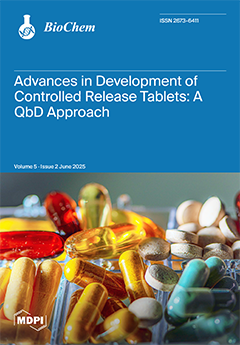Optical coherence tomography (OCT) phantoms are essential tools for calibrating imaging systems, validating diagnostic algorithms, and bridging technological advancements with clinical applications. This review explores the development and application of materials used in OCT phantoms, emphasising their optical, mechanical, and biochemical fidelity to
[...] Read more.
Optical coherence tomography (OCT) phantoms are essential tools for calibrating imaging systems, validating diagnostic algorithms, and bridging technological advancements with clinical applications. This review explores the development and application of materials used in OCT phantoms, emphasising their optical, mechanical, and biochemical fidelity to biological tissues. Gelatin-based phantoms (
n = 1.35) offer controllable absorbance and scattering, with penetration depths (PDs) of 500–2000 µm and scattering coefficients (SCs) of 5–20 cm
−1 but are unstable at room temperature. Silicone phantoms (
n = 1.41) are durable and stable, with SCs of 10–15 cm
−1, suitable for long-term studies. Polydimethylsiloxane (PDMS) phantoms (
n = 1.41) provide manageable optical properties and are used in microfluidic applications. Polyvinyl alcohol (PVA) phantoms (
n = 1.48) mimic soft tissue mechanics, with SCs of 5–15 cm
−1, but require freeze–thaw cycles. Fibrin phantoms (
n = 1.38) simulate blood clotting, with SCs of 5–20 cm
−1. Scattering particles like polystyrene (
n = 1.57) and titanium dioxide (TiO
2,
n = 2.49) offer modifiable properties, while silica microspheres (SiO
2,
n = 3.6) and gold nanoshells (
n = 2.59) provide customisable optical characteristics. These materials and particles are crucial for simulating biological tissues, enhancing OCT imaging, and developing diagnostic applications. Despite progress, challenges persist in achieving submicron resolution, long-term stability, and cost-effective scalability.
Full article




